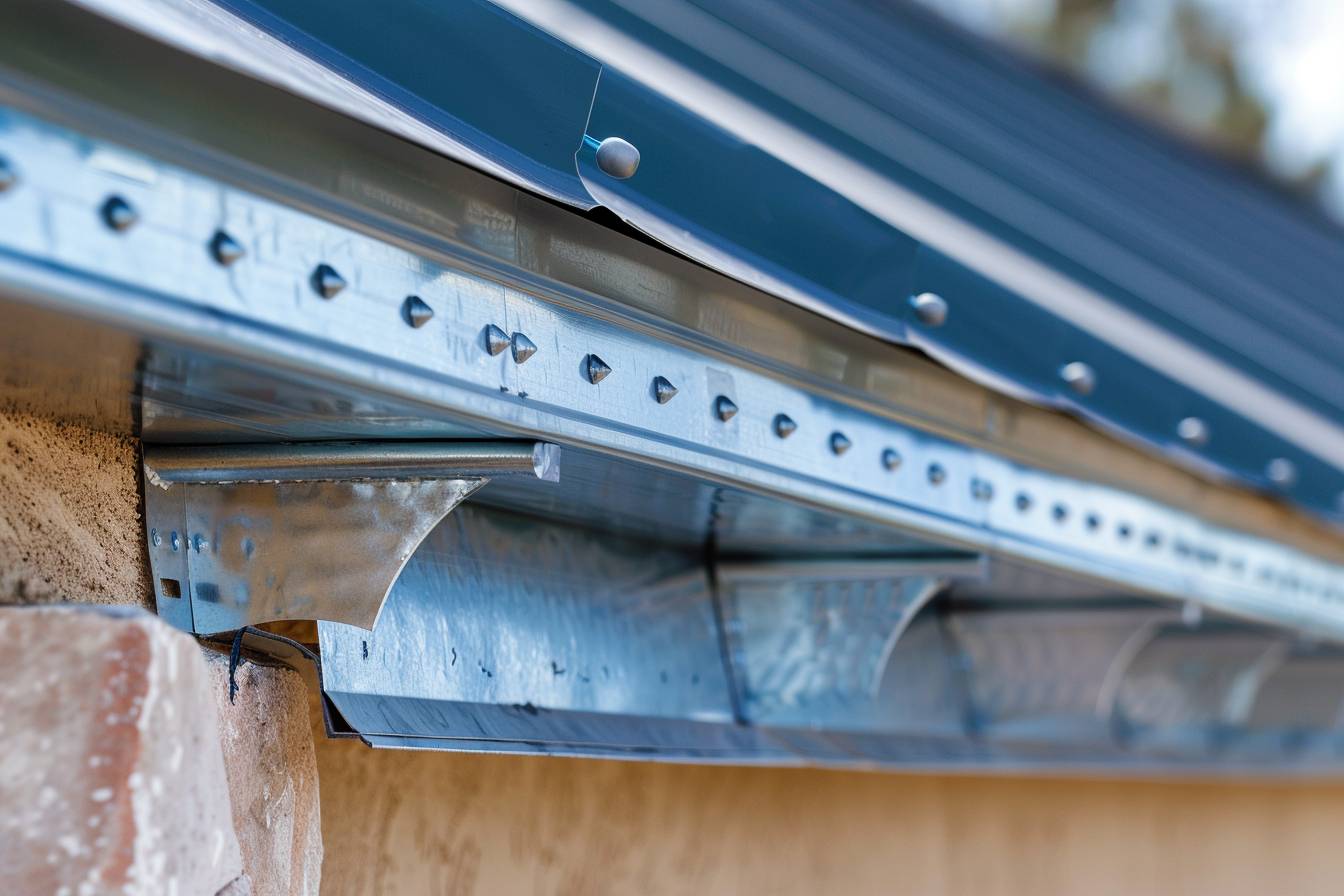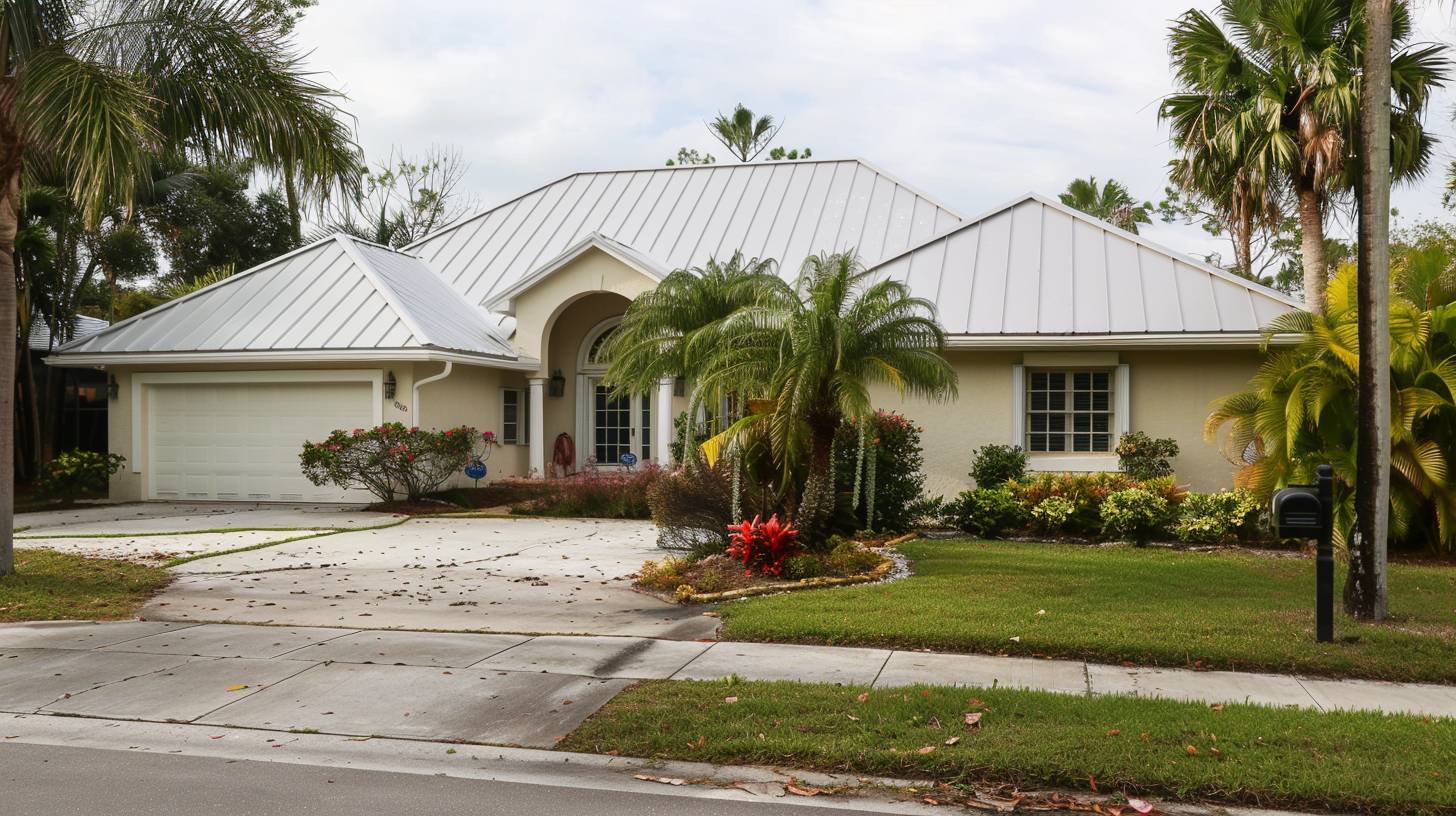Table of Contents [hide]
Florida weather is tough on homes. Your Florida roofing system has to handle sun, salt air, daily downpours, and storm-force winds. The right setup uses code-approved materials, proper underlayment, secure fastening, and smart ventilation so it holds up when it matters.
In this guide, you’ll see which roof types work best by region, how permits and inspections actually play out, what typical costs look like, and when repair vs. replacement makes sense. We’ll also show you how to vet licensed, insured contractors with BBB and state records, plus where wind-mitigation credits may help.
What a Florida Roofing System Must Handle
Florida roofs take on high UV, salt air, cloudbursts, wind-driven rain, and hurricane gusts. A compliant Florida roofing system is selected and built to pass code in those conditions.
South Florida: HVHZ Requirements
In the High Velocity Hurricane Zone (HVHZ), systems follow the Florida Building Code and Miami-Dade Notices of Acceptance. Expect enhanced deck attachment, a sealed deck or secondary water barrier, self-adhered underlayment, and coverings with tested wind uplift and, where required, impact ratings.
Statewide: Assembly Essentials
Everywhere in Florida, performance depends on the full assembly. Use corrosion-resistant fasteners and compatible flashing, keep attic ventilation balanced to code, and choose approved roofing materials such as architectural shingles, metal roofing, or tile. Permits and inspections verify fastening patterns, underlayment type, flashing transitions, and the exact product approval numbers.
Quick Comparison: Florida Roofing Systems
Here’s how the most common Florida roofing systems compare at a glance, so you can quickly choose the right fit.
|
SYSTEM |
TYPICAL USE |
PROS |
CONS |
|
Shingle |
Residential roofing |
Good value, easy repairs |
Ventilation, uplift accessories, and heat aging |
|
Metal |
Residential or light commercial |
Long life, strong wind performance |
Coastal corrosion control, coatings, fasteners |
|
Tile |
Coastal neighborhoods |
Premium look, high wind attachment |
Structural load, underlayment lifespan |
|
Flat |
Commercial roofing |
Membrane options, coatability |
Drainage, seam maintenance, and ponding tolerance |
Shingle Roofing System
Architectural asphalt shingles are common on single-family homes. Choose assemblies that are tested for wind uplift, with proper starters and hip or ridge accessories. Keep attic ventilation balanced to help shingles last. In hail-prone spots, Class 4 impact shingles can reduce future repairs.
Metal Roofing System
Metal roofing is popular for its long life and clean lines. In coastal counties, look for corrosion-resistant alloys, marine-grade coatings, correct clip spacing, and sealed underlayments. Ask for the panel data sheet and wind-uplift listing. Many systems also accept solar clamps without penetrating the deck.
Tile Roofing System (Clay And Concrete)
Tile handles high winds when installed to spec. The added weight means the structure and underlayment need to be ready for it. Clay and concrete tiles bring strong curb appeal in coastal neighborhoods, but repairs require experienced crews and matching profiles.
Flat Roofing System For Commercial Properties
On commercial and flat roofs, single-ply membranes, modified bitumen, and built-up roofing are common. Success depends on positive drainage, ponding tolerance, and a steady maintenance schedule. Many buildings use semiannual inspections to catch seam and penetration issues early.
Licenses, Insurance, and BBB Checks for Florida Roofing
Hire a licensed and insured contractor. In Florida, you can verify statewide credentials through the Florida Department of Business and Professional Regulation (DBPR) and confirm license details with the Florida Construction Industry Licensing Board. Make sure the business name on the license matches the one on your estimate.
Ask for proof of general liability and workers’ comp. Check dates and coverage limits. For reputation and transparency, read the company’s Better Business Bureau (BBB) Business Profile to see accreditation status, complaint history, response patterns, and how reviews are distributed over the reporting period.
Roofing Permit And Inspections In Florida
Most projects follow a simple path: permit application, approval, material ordering, installation, and then final inspection. Your permit lists approved products and the Florida Building Code section they meet.
In South Florida’s HVHZ, jurisdictions may require Miami-Dade product approvals and references to RAS/TAS test standards. Some areas also schedule a mid-roof inspection to verify deck attachment, underlayment, and fastening before the roof is closed. Insurance claims often include a separate inspection to document storm damage before work begins.
Roofing Repairs Versus Replacement
Repairs make sense when the issue is small and the rest of the system is sound. Think isolated leaks at a flashing, minor sealant failures, or a few damaged shingles or panels.
Plan for replacement when the roof is near the end of its life, leaks keep returning, the decking is soft, or corrosion and granule loss are widespread. Insurers focus on storm cause and code upgrades, so your final scope may include items like secondary water barriers. In wind-borne debris regions, impact-rated windows are often part of the broader building-envelope plan.

How to Vet a Roofing Contractor
1. Verify the state license
Use Florida’s DBPR lookup to confirm the trade license number, issuing locale, status, and expiration date. Make sure the legal business name on the license matches the name on your estimate and website.
2. Check insurance
Ask for proof of general liability and workers’ compensation. Confirm policy numbers, coverage limits, and active dates.
3. Review the BBB profile
Open the company’s BBB Business Profile and note accreditation status, number of ratings, star average, and the distribution of recent reviews. Read how the business responds to complaints.
4. Cross-check business details
Match the license name to the phone number, address, and website. Spot-check recent permits in your city or county records.
5. Look at recent work
Request two or three local addresses, photos of similar projects, and at least one reference from the past year.
FAQs About Florida Roofing Systems
What inspections happen during a Florida roof install?
Expect permit card staging, required notices, and photo documentation. Some jurisdictions do a mid-roof inspection. All projects finish with a final inspection that verifies fasteners, flashing, vents, underlayment, and product approval numbers.
How long do permits take in South Florida?
Anywhere from a few days to several weeks. Timing depends on backlog, hurricane season demand, and whether your materials have Miami-Dade or HVHZ product approvals on file.
Which roofing materials last longest in the Florida sun?
Properly detailed metal roofing and concrete or clay tile often outlast shingles. Real service life depends on ventilation, coatings, corrosion resistance, and routine maintenance.
What is the Florida Homeowners’ Construction Recovery Fund?
A state program that may reimburse eligible consumers for certain losses caused by licensed contractors. Learn more on the Florida DBPR site.
Are flat roofs viable in coastal counties?
Yes. They require wind-rated assemblies, secure edge metal, positive drainage, coating compatibility, and a regular maintenance plan to manage seams, penetrations, and ponding.
Finishing Up: Florida Roofing Next Steps
You now know what a Florida-ready roofing system looks like, how permits and inspections work, and which materials hold up in our sun and storms. That clarity makes comparing bids and timelines much easier.
If you want to explore real options, Mr. Remodel connects you with trusted pros in under 30 seconds by email, phone, or text. Work with licensed, reviewed, and reliable contractors. Compare prices, read reviews, and schedule a free, no-obligation appointment today.





